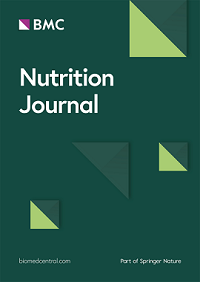Longitudinal Association of Nut Consumption and the Risk of Cardiovascular Events: A Prospective Cohort Study in the Eastern Mediterranean Region
Authors
Noushin Mohammadifard,1 Niloufar Ghaderian,2,* Razieh Hassannejad,3 Firouzeh Sajjadi,4 Masoumeh Sadeghi,5 Hamidreza Roohafza,1 Jordi Salas-Salvadó,6,7,* and Nizal Sarrafzadegan8
Affiliations
Abstract
Background and Aim: There are few pieces of evidence on the association between nut consumption and the risk of cardiovascular disease (CVD) in the Eastern Mediterranean Region. This study investigated the relationship of nut consumption with the risk of CVD and all-cause mortality in the Iranian population.
Methods and Results: This population-based prospective cohort study was carried out in 6,504 randomly selected participants aged ≥35 years in central Iran (2001–2013) in the framework of the Isfahan Cohort Study. Dietary data were collected by a validated 48-item food frequency questionnaire. Subjects or their next of kin were interviewed biannually, looking for the possible occurrence of cardiovascular events and all-cause mortality. During the median follow-up of 135 months and 52,704.3 person-years, we found a total of 751 CVD events. In unadjusted model, participants in the highest quartile of nut intake had a lower CVD risk {hazard ratio (HR) [95% confidence interval (CI)]: 0.57(0.47–0.70); P for trend < 0.001}, CVD mortality [HR (95% CI): 0.54 (0.33–0.72); P for trend < 0.001], and all-cause mortality [HR (95% CI): 0.24 (0.14–0.42); P for trend < 0.001]. In the fully adjusted model, the association was diluted, and no significant relationship was found between nut intake and CVD events and all-cause mortality, except for CVD mortality in the highest quartile vs. the lowest one [HR (95% CI): 0.55 (0.30–0.98)].
Conclusion: Nut intake had an inverse association with the risk of CVD mortality. It is suggested to perform studies to examine the association of individual types of nuts and different preparation methods on CVD risk and mortality.

